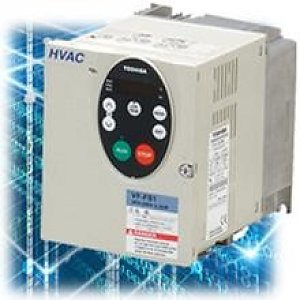Inverters are used in ACs to modulate fan motors and compressors from a 100% to a 20% minimum. It is important to point out at this stage that the minimum varies from one manufacturer to the other depending on engineering limitations and part selection.
In basic electronics, a rectifier is a device used to check alternating current also known as AC to direct current (DC) power. The DC power then uses pulse-width modulation of the DC current to enable a change in frequency. Thereafter, the DC current is channeled through the inverter back into AC power.
The changing of AC frequency helps regulate the speed of the motor and by extension allow the compressor and any other motor using an inverter to be modulated from minimum speeds to maximum speeds.
Advantage of Modulation
While it is possible to run the motor 100% all through, this bogs down energy because your system irrespective of the cooling needs runs at the same speed. With modulation, your system can be demand based and as such use minimum and maximum energy only when necessary. This makes it efficient, lasts longer, and saves you a lot of money in maintenance and repairs.
The efficiency of modulation flows over to enable your fan motors and compressors to eliminate the effect of locked rotor amps. This is where compressors have to overcome the initial resistance to move from a dead stop to 100% in a short time. Eliminating this effect through modulation means that the system will respond based on demand or load and may even run longer but efficiently.
Wear and Tear and Cycling Issues
During summer when the AC system experiences maximum demand, a typical cycling frequency range is 4 to 6 on and offs per hour. This is however dependent on lots of other factors as well as the system itself.
Inefficient systems may run continuously and not turn off while on the other hand, oversized systems will cycle at a higher frequency. Inverter air conditioners can be used to deal with these problems. Such AC systems experience a soft start control that eliminates the tendency of the system blasting to 100% in a short cycle.
Inverter ACs also narrow temperature swings which means better comfort and more efficiency for you.
Inverter Control
Having seen the utility an inverter brings to an AC unit, it is important to also know how inverters are controlled. The controlling involves modulating the compressor and fan motor to a lower RPM or speed in response to the demand or load.
The control is based on superheat on the evaporator coil that protects the compressor from liquid sludging. When the compressor ramps down, the condenser motor on the other hand also responds in a similar fashion to the same signal and this makes it match the speed of the compressor. Assuming the compressor ramps up the condenser motor, the indoor blower motor also ramps up. Manufacturers may have their own unique methods of controlling the compressor speed, but whichever the case, the minimum control should be geared towards protecting the compressor from liquid sludging.





